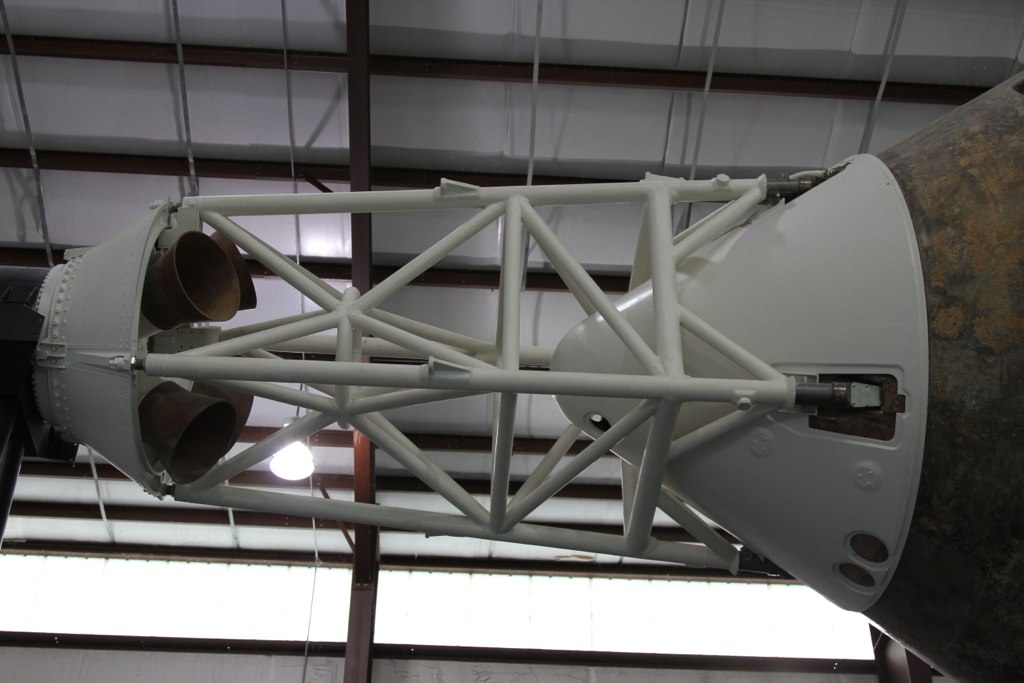MaxQ
Tripoli 2747
I've taken a look at the various Saturn 1B kits available from 1/70 to 1/48th and thought it would be pretty cool to make a larger version.
I'd be continuing the lightweight materials build concept I did with previous projects, with the idea of keeping motor selection in the range of something long burn low peak thrust to help hold the thing together.
The 8.5 inch Apollo Little Joe II that I built at 1/18th scale was made of lightweight materials, all poster board, foam core, balsa and came in around 3 lbs, dry. Has flown nine times and the roughest part has always been the landing.
burkefj / Frank has done some excellent work with larger lightweight scale projects like his foam Pershing Missile.
https://www.rocketryforum.com/showt...rge-Pershing-1A/page2&highlight=pershing+foam "Lightweight Large Pershing 1A"
The theory, as I see it, is how big can you go? - if you go high power, but keep the motor impulse within reason thereby avoid the need for a heavily reinforced structure thus keeping a lighter overall weight - all within reasonable limits.
Cluster air starts in some of the eight tank tubes? - yes, that would be nice.
For clusters, I like a central core motor that is the highest impulse of the motors and ignites first, gets the thing moving and straight in flight.
Don't like unsymmetrical thrust. I may even cant the outboards like the popular Deuces or Tress.
First step (as previously posted in "Scale" ) was doing a number of calculations to see how big this thing would get using readily available components for the main section, which is the eight tank tubes in the fin can of the airfame.
Options for the eight tank tubes in this larger upscale of popular kit versions were standard 2.6 inch diameter body tubes, 3 inch diameter tubes, or the 4 inch diameter, all from Loc P.
These would also predict how big the most difficult to fabricate part would get, which is the main airframe section forward of the tank tubes - that part will enclose the eight tubes aft in the fin can.
That component got very big quickly on paper - using the 4 inch tubes.
3 inch diameter Loc P. tubes get expensive when you need eight of them, and they are only 34 inches long...four inches shorter than required.
I found some very lightweight Scotch brand 3 inch diameter mailing tubes locally - at the fraction of the cost of other options.
They were very light weight as they are thin wall, which is a definite plus in the aft end of this thing...hopefully less nose weight.
Standard 3' Loc P. couplers also fit nicely in my samples, which is good, since these tubes are 36 inches long - but will still require 2 inch extensions.
Drew up a template which shows the main airframe would come in at 11.2 inch diameter.


I'd be continuing the lightweight materials build concept I did with previous projects, with the idea of keeping motor selection in the range of something long burn low peak thrust to help hold the thing together.
The 8.5 inch Apollo Little Joe II that I built at 1/18th scale was made of lightweight materials, all poster board, foam core, balsa and came in around 3 lbs, dry. Has flown nine times and the roughest part has always been the landing.
burkefj / Frank has done some excellent work with larger lightweight scale projects like his foam Pershing Missile.
https://www.rocketryforum.com/showt...rge-Pershing-1A/page2&highlight=pershing+foam "Lightweight Large Pershing 1A"
The theory, as I see it, is how big can you go? - if you go high power, but keep the motor impulse within reason thereby avoid the need for a heavily reinforced structure thus keeping a lighter overall weight - all within reasonable limits.
Cluster air starts in some of the eight tank tubes? - yes, that would be nice.
For clusters, I like a central core motor that is the highest impulse of the motors and ignites first, gets the thing moving and straight in flight.
Don't like unsymmetrical thrust. I may even cant the outboards like the popular Deuces or Tress.
First step (as previously posted in "Scale" ) was doing a number of calculations to see how big this thing would get using readily available components for the main section, which is the eight tank tubes in the fin can of the airfame.
Options for the eight tank tubes in this larger upscale of popular kit versions were standard 2.6 inch diameter body tubes, 3 inch diameter tubes, or the 4 inch diameter, all from Loc P.
These would also predict how big the most difficult to fabricate part would get, which is the main airframe section forward of the tank tubes - that part will enclose the eight tubes aft in the fin can.
That component got very big quickly on paper - using the 4 inch tubes.
3 inch diameter Loc P. tubes get expensive when you need eight of them, and they are only 34 inches long...four inches shorter than required.
I found some very lightweight Scotch brand 3 inch diameter mailing tubes locally - at the fraction of the cost of other options.
They were very light weight as they are thin wall, which is a definite plus in the aft end of this thing...hopefully less nose weight.
Standard 3' Loc P. couplers also fit nicely in my samples, which is good, since these tubes are 36 inches long - but will still require 2 inch extensions.
Drew up a template which shows the main airframe would come in at 11.2 inch diameter.


Last edited:

























